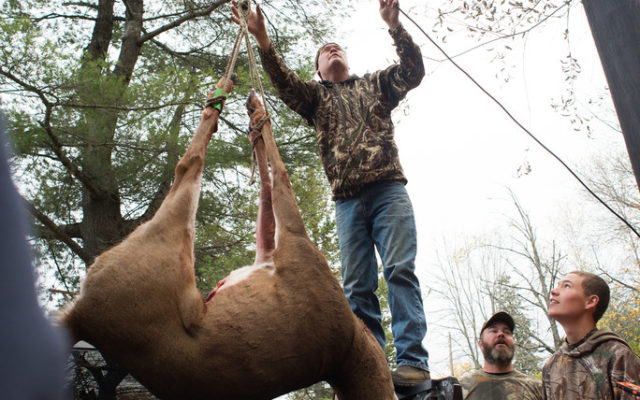
What should you do to hunt the rut more effectively? Or is it too late to worry?
When November days turn to double digits, plenty of Maine deer hunters make a special point to spend more time in the woods, taking advantage of the peak of mating season, also known as “the rut.”
What should those hunters know? How should they improve their odds? And is focusing on that peak period of mating activity even that important?
Nathan Bieber, the state deer biologist for the Maine Department of Inland Fisheries and Wildlife, said hunters who make a choice to spend extra time in the woods during the second and third weeks of the season might find a buck … or they might even be arriving too late.
“When people say “peak of the rut” I think they’re usually talking about the time when most does are bred, which is not necessarily the best time to be in the woods, if you’re choosing one week [to hunt],” Bieber said.
Bieber pointed out that breeding activity takes place over several weeks, and that activity can be plotted as a bell-shaped curve on a graph.
“You’re still going to have chasing behaviors and rutting behaviors well before that peak. And if you think about it, at that peak, if you look at a bell curve, probably half of the does have been bred by that point,” Bieber said. “So you’d probably want to be in the woods when fewer of the does have already been bred.”
Bieber said there’s a good piece of advice that would help hunters fill their tags.
“The first thing I would advise should happen well before the season. That would be scouting, scouting, scouting. Not only on the ground, but aerial photos,” Bieber said. “If you know folks who have hunted in the area for a while, it doesn’t hurt to pick their brain and try to figure out areas bucks have used in the past.”
Bieber said aerial photos can help hunters identify food sources adjacent to heavy bedding cover, or funnels between woodlots and fields that might give deer cover as they travel.
Those tactics will work all season long. The hunter’s biggest advantage during the rut: When a buck turns his attention toward finding a mate, he often throws caution to the wind.
“You’ve got to account for the fact that during the rut, a deer’s daily cycle is totally thrown out of whack. They’re not as crepuscular, where they’re just active around daylight and sunset,” Bieber said. “Bucks can be active all day in search of does, so hunters have to be more patient during the rut and spend more time in the field.”
While recent wet weather may have dampened the enthusiasm of hunters, Bieber said the wet ground has actually given hunters an advantage.
“[The recent rain and wet ground] is going to impact more how you hunt rather than where you hunt. You’ve got a lot of tracking substrate right now with a lot of soft ground. You’ve got a lot of quiet leaves. You may be doing more stalking than sitting if you previously chose to sit more often,” he said.
The bottom line: Get out there.
“Bucks are active all day long right now. Hunt where the sign is,” he said.